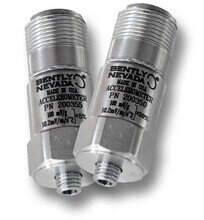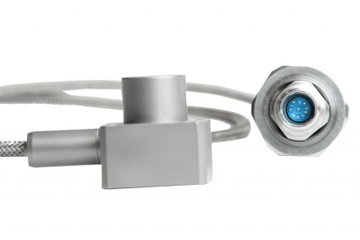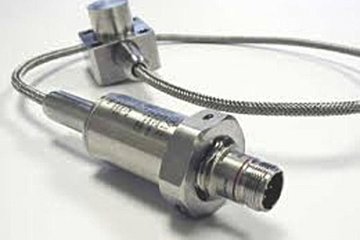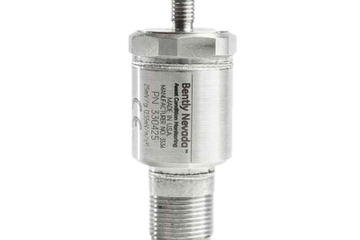Overview
The evolution of our accelerometer sensors, velocity-sensing tools, pressure sensors, and vibration sensors can be traced back to our velocity sensors. These high-sensitivity units offer a self-generating moving-coil design used by geologists to measure movement in the Earth’s crust. Today, we still refer to “seismic” sensors for condition monitoring or general purpose in a nod to their origin.
These early sensors led to the introduction of different types of accelerometers, including rugged solid-state piezoelectric accelerometers, ushering in today’s integrated capacitive configurations that deploy signal processing circuitry for output signals using velocity rather than acceleration.
Our capacitive calibration experience and expertise in how accelerometers work across the dynamic range, developed over decades, offer a selection of first-rate, high-sensitivity casing-mounted capacitive accelerometers and velocity sensors with a variety of models for specific applications.
Bently Nevada's line of accelerometers, velometers, and other acceleration and velocity sensing tools each come with features to help keep your machinery in its best condition. Both can handle extreme heat. The velocity sensor is made to be self-powered, radiation-resistant, and flexible to suit your plant, while the acceleration sensor protects from electrical hazards and offers portable data collectors.
- Withstands Extreme Heat
- Flexible and Reliable
- Radiation Resistant
- Sense Low-Frequencies
- Isolates Electricity
- Withstands Extreme Heat
- Monitors Gearmesh Frequencies
- Fully Compatible with Portable Data Collectors
The accelerometers in this sensor series offer a number of features making them well suited for harsh industrial environments and installation in locations with limited available space. These case-mounted accelerometers provide acceleration measurements in units of g or m/s^2. The sensor has a standardized output voltage proportional to the level of acceleration which can interface to a variety of condition monitoring solutions. The range of vibration frequencies detected by these sensors spans from 0.2 – 14,000 Hz.
The 20015x Accelerometers are general-purpose, wide frequency, case-mounted seismic transducers designed for use with Trendmaster† proTIMs.
The AM Series Accelerometers are general-purpose, case-mounted seismic transducers designed for use with Trendmaster Pro Constant Current Direct Input Card, part number 149811-02 and the Seismic Direct Input Card, part number 164746-01. The AM Series Accelerometers are contained within a hermetically sealed, stainless steel case. The design provides an extremely rugged transducer, well suited for harsh industrial environments. Each transducer’s top-mounted, 2-pin connector (MIL-C-5015) allows for easy installation and removal of the interconnecting signal cable. A ¼-28 threaded hole on the bottom of the casing accommodates multiple mounting options. The AM Series Accelerometers contain a piezoelectric sensing device, which generates charge when subjected to vibration. This charge is then converted electronically to a differential voltage signal, which is proportional to the acceleration that is parallel to the sensitive axis of the transducer.
Bently Nevada† Seismoprobe† Velocity Transducer Systems are designed to measure absolute (relative to free space) bearing housing, casing, or structural vibration. The two-wire systems consist of a transducer and an appropriate cable. The Seismoprobe family of velocity transducers is a two-wire design that uses moving-coil technology. It provides a voltage output directly proportional to the transducer's vibration velocity.
Moving-coil transducers are less sensitive to impact or impulsive excitation than solid-state velocity transducers, which are inherently accelerometers with embedded integration electronics. They can represent a good choice for certain applications. Because they don’t require external power, they are convenient for portable measurement applications.
Two types of Seismoprobe Velocity Transducer are available:
9200: The 9200 is a two-wire transducer suitable for continuous monitoring or for periodic measurements in conjunction with a test or diagnostic instrument. When ordered with the integral cable option, the 9200 has excellent resistance to corrosive environments without the need for additional protection.
74712: The 74712 is a high-temperature transducer model of the 9200.
The Bently Nevada 370300 accelerometers are designed to provide high electrical isolation between the base of the transducer and its internal electronics. This isolation offers greater protection against arcing/electrostatic discharge (ESD), as high as 6,000 volts. The transducer provides an amplitude range of 80 g peak and a sensitivity of 100 mV/g.
The 350900 High-Temperature Velocity and Acceleration Sensor (HTVAS) provides a continuous acceleration and velocity output, allowing the customer to protect their machine with a velocity signal while simultaneously capturing the acceleration signal for machinery diagnostics. Its design is primarily for use with the 3500/42M and 3500/44M monitors. When attaching the HTVAS to a 3500/42M or 3500/44M monitor you must use the acceleration and velocity signals from the transducer on a separate channel pair (such as channels 1 and 3) or on separate monitors.
The 190501 Velomitor† CT (Cooling Tower) is a low-frequency velocity sensor modeled off our standard 330500 Velomitor, with a sensor for use in hazardous areas. The 190501 has a unique frequency range which is adjusted downward to 3.0 Hz to 900 Hz ±1.0 dB or 1.5 Hz to 1.0 kHz ±3.0 dB to enable velocity sensor to measure vibration for fans running as low as 90 rpm. While capable of delivering signals with cable lengths up to 305 m (1,000 ft), the 190501 still offers the sensitivity you need (3.94mV/mm/s (100 mV/in/s) ±5%).
The 330500 Velomitor is a rugged, 2-pin, integrating piezo-accelerometer that is especially suited for condition monitoring of machines with rolling-element bearings and where vibration measurements in units of velocity are most useful. Designed with multiple approvals for Hazardous Areas, the 330500 works with cable lengths up to 305 m (1,000 ft) while still delivering excellent sensitivity - 3.94mV/mm/s (100 mV/in/s) ±5% - along with a frequency range of 4.5 Hz to 5 kHz ±3.0 dB or 6.0 Hz to 2.5 kHz ±0.9 dB.
The Bently Nevada Low Frequency Velocity Transducer System (LFVTS) is specifically designed for low frequency and low amplitude vibration measurements from machines, such as hydroelectric turbines where slow rotating speeds require detecting low vibration signals. It detects the vibration of the stator core, stator frame, and bearing housing supports.
Our 330525 Velomitor XA Piezo-Velocity Sensor is a more robust version of our 330500 Velomitor - for when you need to data from harsher environments. The 330525 offers a 316L stainless steel case, unique weatherproof connector and cable assembly permit mounting without housing. Designed to withstand various hazardous environments while still offering a great degree of sensitivity (3.94mV/mm/s (100 mV/in/s) ±5%) coupled with a wide frequency range (4.5 Hz to 2 kHz ±3.0 dB or 6.0 Hz to 1 kHz ±0.9 dB) and the ability to operate with cable lengths up to 305 m (1,000 ft).
Our 330530 Radiation Resistant Velomitor is a rugged, 2-pin integrating accelerometer that blocks gamma radiation with a performance guarantee to a maximum absorbed dose of 12.0 Mrad while offering sensitivity in the range of 3.94mV/mm/s (100 mV/in/s) ±5%. The 330530 Radiation Resistant Velomitor also can operate with a maximum cable length of 305 m (1,000 ft) and in addition to radioactive environments, is also approved for use in multiple hazardous environments.
Bently Nevada's 330750 and 330752 High-Temperature Velocity Sensors offer a unique design with the sensing element segregated from the signal conditioning electronics. Due to this design, the Sensing head can be installed on surfaces up to 400°C (752°F) with signal conditioning electronics installed in a cooler location thus still offering sensitivity in the range of 5.7 mV/mm/s (145 mV/in/s) ±5%. These high-temp velomitor sensors can operate with a maximum cable length of 305 m (1,000 ft) with no signal degradation, and offer a broad frequency range: 15 Hz to 2000 Hz ± 3.0 dB or 20 to 1000 Hz ±0.9 dB.
Bently Nevada offers the following services that will support your Acceleration and Velocity Sensors in keeping your machinery in the best condition:
- System Maintenance & Availability
- Site Project Management
- Design, Installation & Commissioning
Our customers often find that these hardware products work well with the Velocity Sensors or Acceleration Sensors:

How Do They Work?
Accelerometers work by measuring high-frequency acceleration. For vibration measurements, there are numerous types of accelerometers for both lab and industrial use. They include purely mechanical devices that measure acceleration using mechanical vibration switches.
They also include high temperature, low power, low frequency, and analog types, along with gyroscopes, 3-axis accelerometers (triaxial accelerometers), single-axis accelerometers, and types that rely on the piezoelectric effect. There are also fiber optic, strain gauge, low noise, and piezoresistive accelerometers, and micro-electro-mechanical systems (MEMS) types.
MEMS accelerometer designs, in particular, are increasing in popularity where high accuracy and high sensitivity are not required when measuring acceleration forces. However, piezoelectric material accelerometer designs are by far the most prevalent in machinery monitoring applications.





